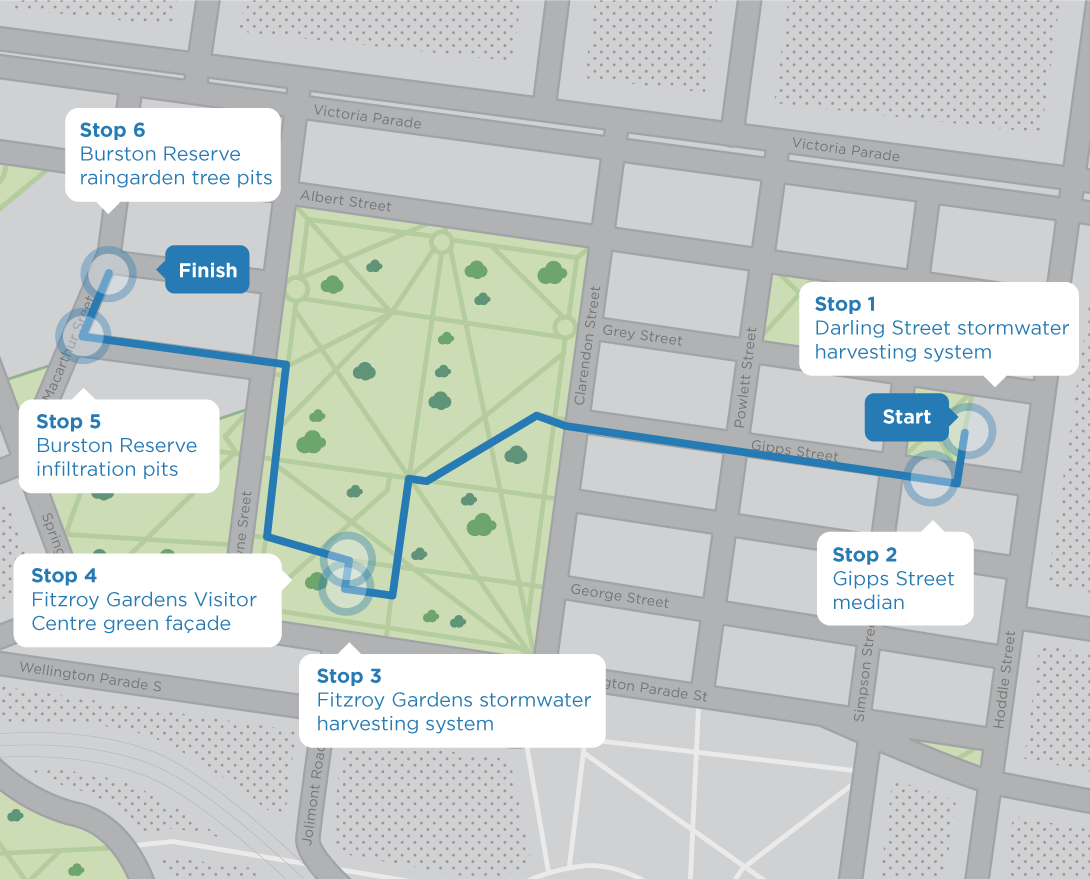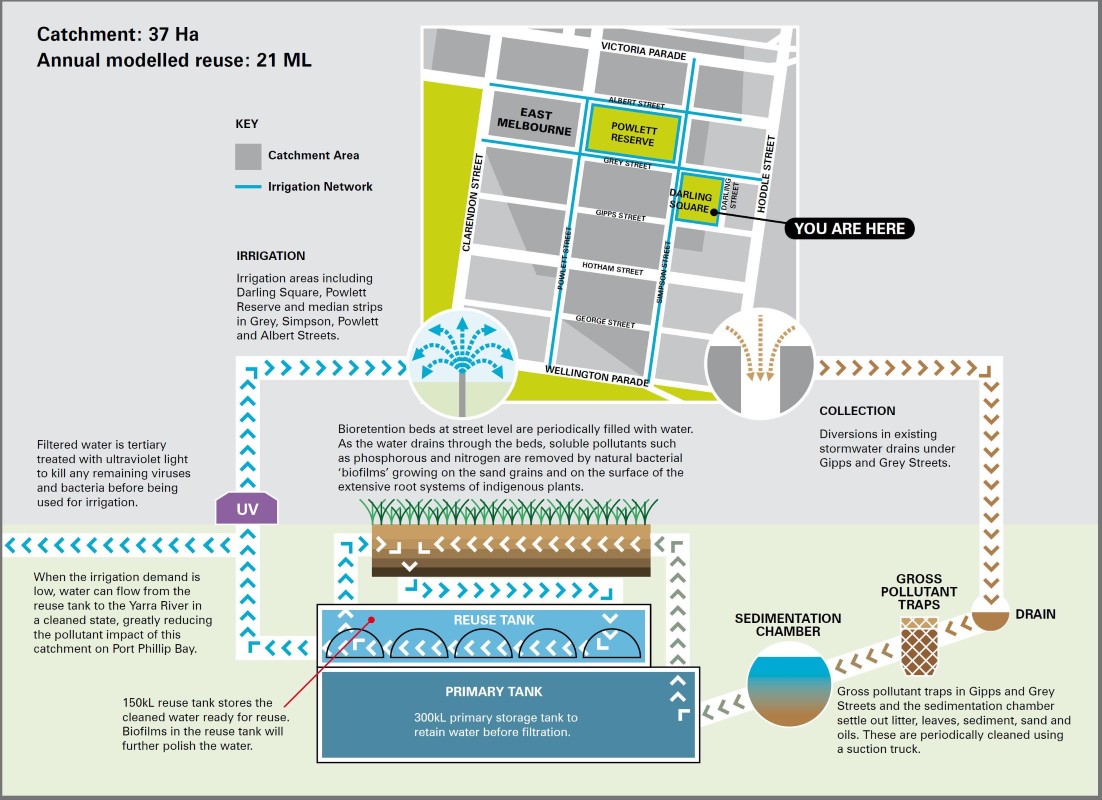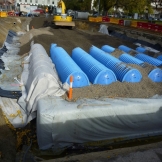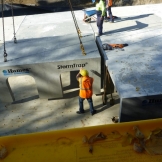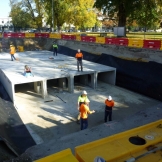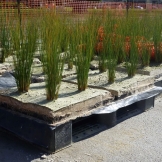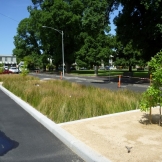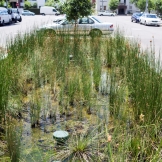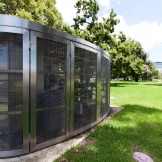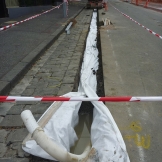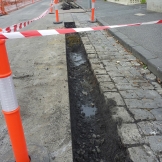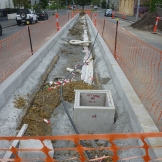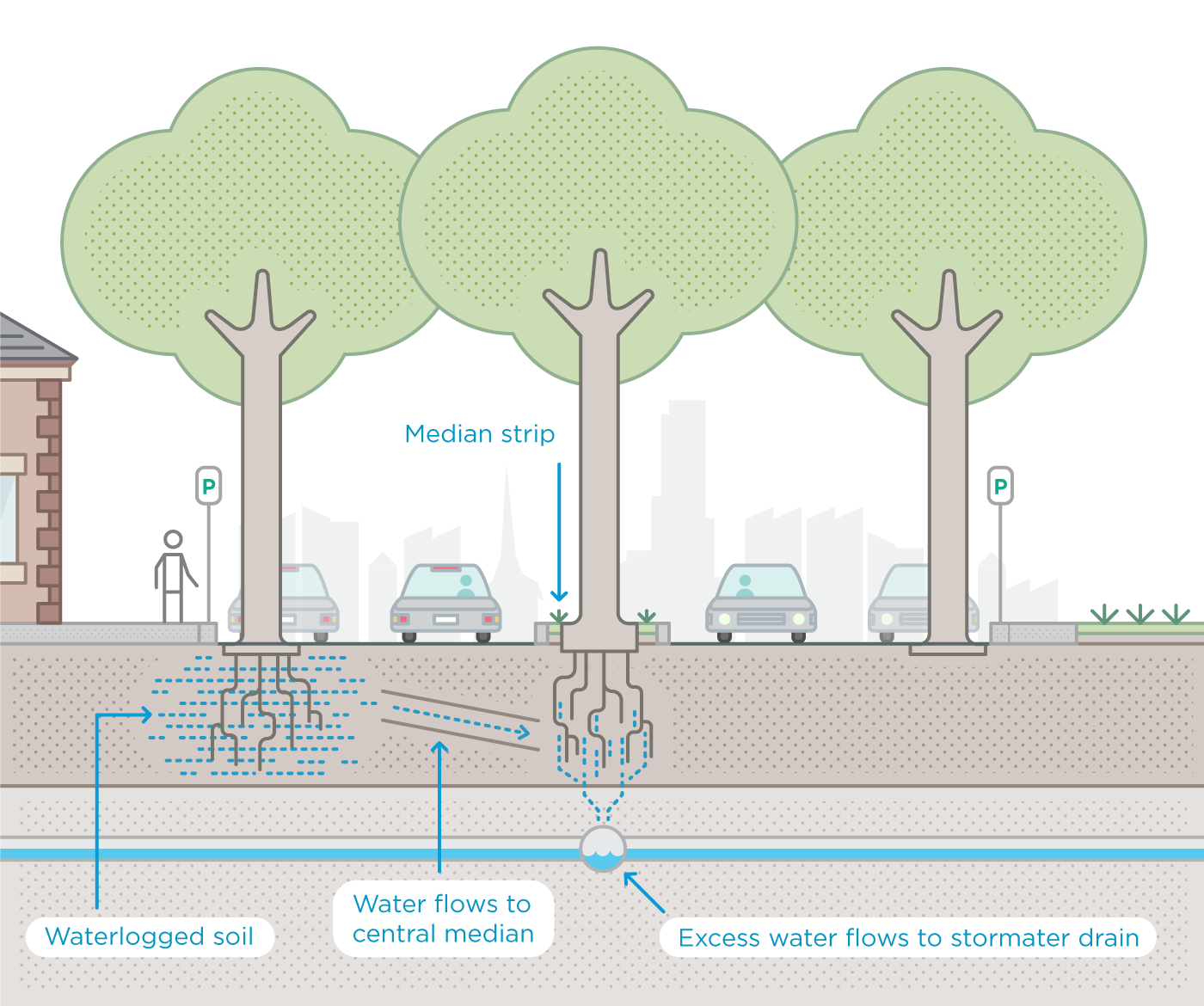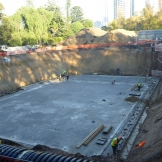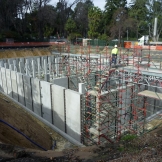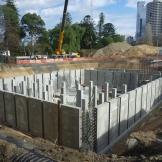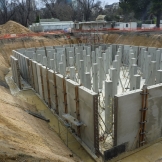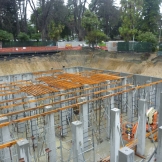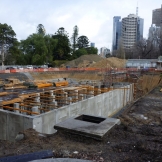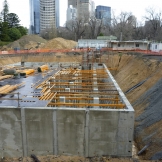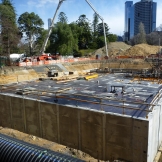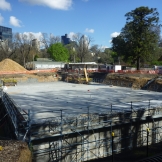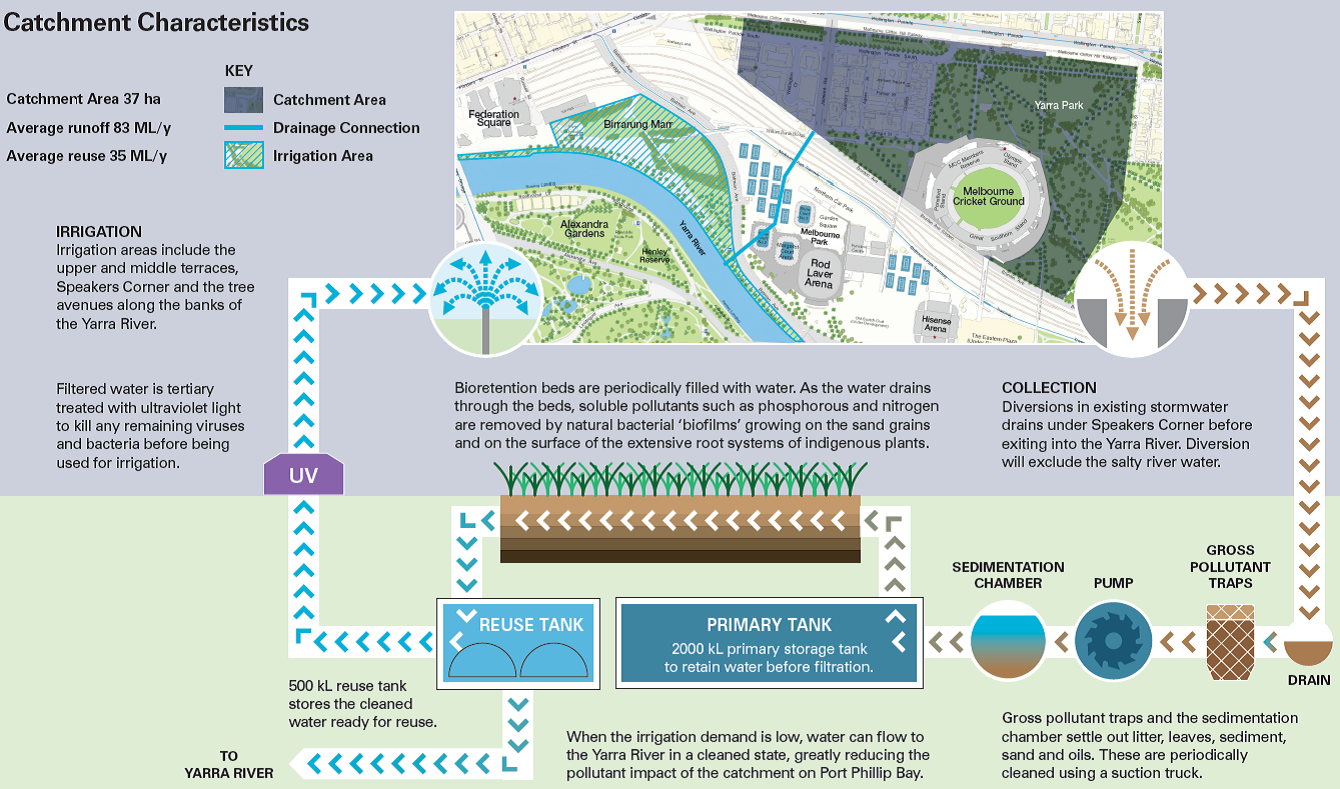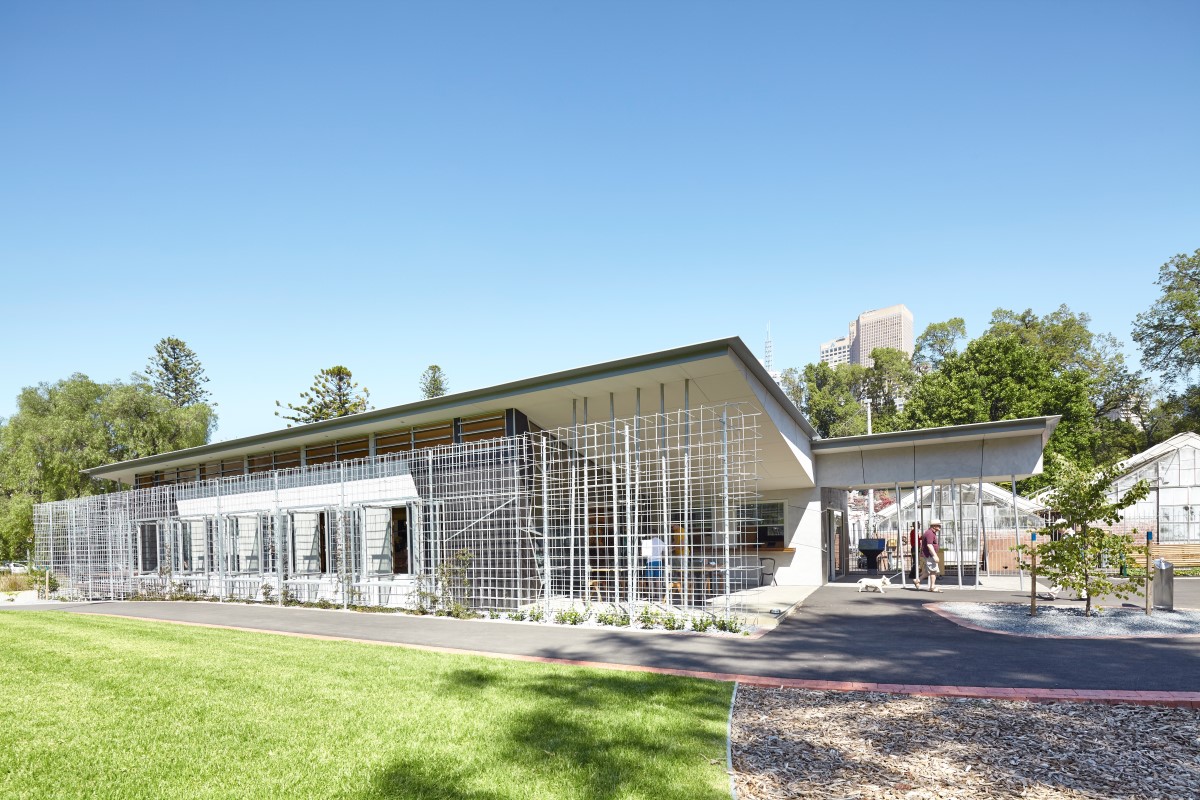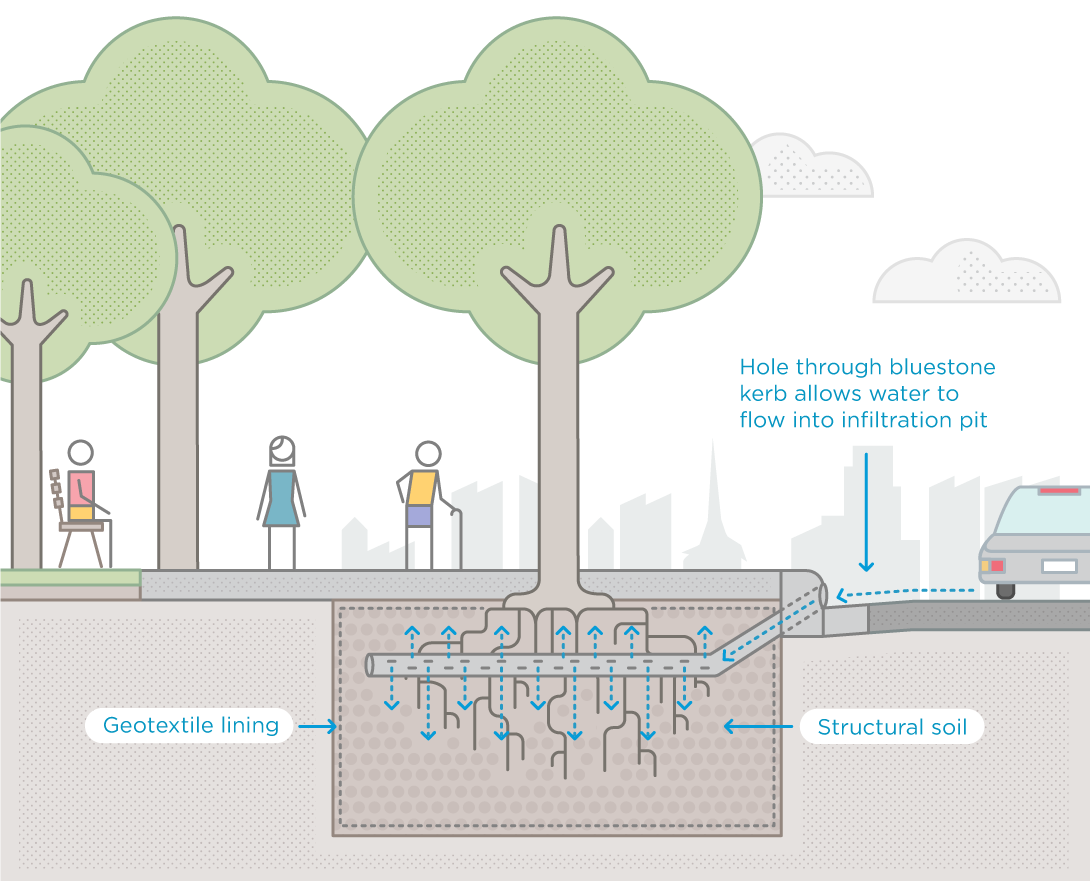In 2012 the City of Melbourne released its Urban Forest Strategy. The strategy outlines the importance of the urban forest and green open spaces in cooling the city and adapting to climate change.
At this time, several of the trees in Burston Reserve had either been removed or were in very poor health. The reserve was upgraded to increase its green footprint and open space and to become a water sensitive landscape.
The park redesign included:
- Expanding turf and garden areas and reducing the width of surrounding footpaths.
- Installation of three new raingarden tree pits to capture stormwater runoff from Macarthur Street.
- Installation of two soaker pits to capture runoff and direct it to four new trees.
- Removing and replacing declining trees and planting additional trees.
At Stop 1 you can see the three raingarden tree pits within the pavement. These trees are younger than most of the other trees in the reserve.
How do the raingarden tree pits work?
Each raingarden tree pit works like a small raingarden. When it rains, stormwater runs off road surfaces and into the gutters.
The raingarden tree pits are set into the kerb along Macarthur Street. They intercept and clean the water before it goes into the drain.
Each pit contains layers of substrate that work with the tree’s root system to filter pollution from the stormwater. This includes nitrogen, phosphorus and oils.
The tree pits also include a rock mulch layer to retain moisture in the soil and prevent erosion during rain.
A grate sits around the base of the tree, flush with the pavement. This protects the tree pit from damage and ensures that pedestrians don’t trip over it.
A pipe is located at the bottom of the well. It allows cleaned stormwater to drain back into the drainage system.
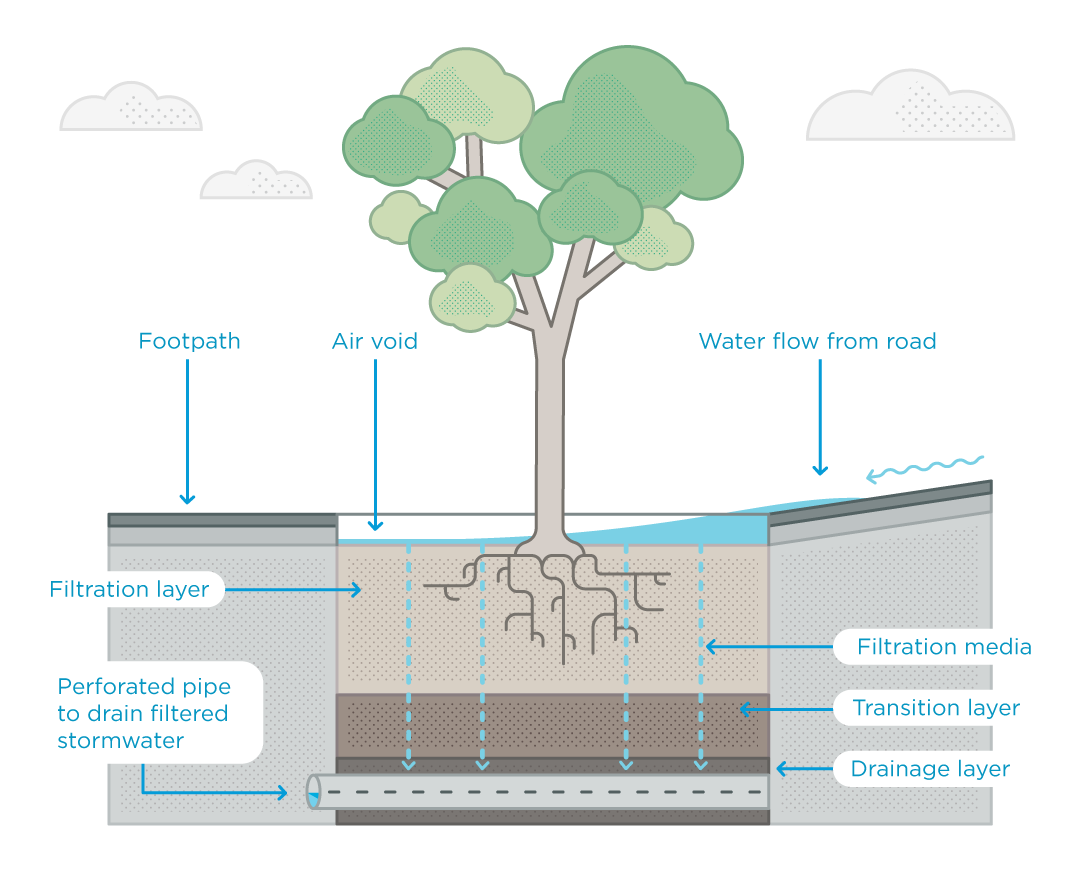
This is the end of the tour!
